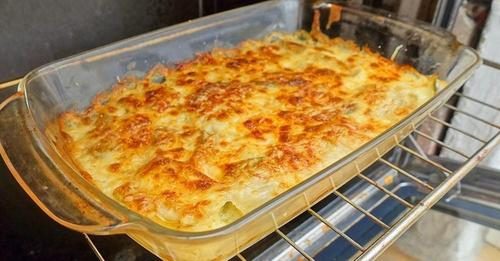What’s the Difference Between Pecorino and Parmigiano Cheese?
For those of you who want to know, here’s the skinny on the differences between pecorino and Parmigiano cheese! It can be confusing when you go to the store and see these cheeses – are they interchangeable in recipes or not? There are subtle differences between the two cheeses, which we will look at in this article.
;Resize,width=742;)
For those of you who want to know, here’s the skinny on the differences between pecorino and Parmigiano cheese! It can be confusing when you go to the store and see these cheeses – are they interchangeable in recipes or not? There are subtle differences between the two cheeses, which we will look at in this article.
Cheeses are made from the milk of cows, goats, buffaloes, and sheep. There is even a cheese made of donkey milk, which is one of the most expensive cheeses in the world, but for this article we’re going to be looking at two Italian hard cheeses.
Parmigiano Reggiano
This cheese is sometimes confused with Parmesan, which it is not. According to the FDA, any cheese labeled Parmesan, Parmigiano or reggiano is a cheese made from cow’s milk with a granular texture and a hard and brittle rind. Rennet is also present in the cheese, which makes it unsuitable for vegetarians.
Parmigiano Reggiano is the Ferrari of hard cheeses. It has a Protected Designation of Origin status, which means that the ingredients, sourcing and production of this cheese are monitored in order for the final product to be allowed to bear the name of this cheese. It’s similar to Parmesan in that it’s a cow’s milk cheese that contains rennet, but that’s where the similarity ends.
It’s made in only two Northern Italian regions, and it must be aged for at least a year – some are aged up to 36 months! Because of the attention to detail, aging time, and limited production, this cheese is the real deal. It’s more expensive than Parmesan, but whether you use it at the table or for cooking, there’s no denying that it’s money well spent.
Pecorino Romano
This cheese also bears the Protected Designation of Origin status, so you can be sure it’s legitimate. This cheese is made in Sardinia, a region in Central Italy. It’s produced with sheep’s milk, so it is different in flavor and texture to Parmigiano Reggiano. It’s also much saltier and stronger tasting than the Parmigiano. Sadly for vegetarians, this cheese also contains rennet.
Whenever you’re buying cheeses like this, it’s best to stay away from any that is pre-grated or shredded, as cheese starts to lose its moisture once it’s been cut or grated. Ask your cheesemonger how recently the cheese was cut, and if it’s been a while, see if they will cut you a fresh block.
;Resize,width=767;)
;Resize,width=712;)


